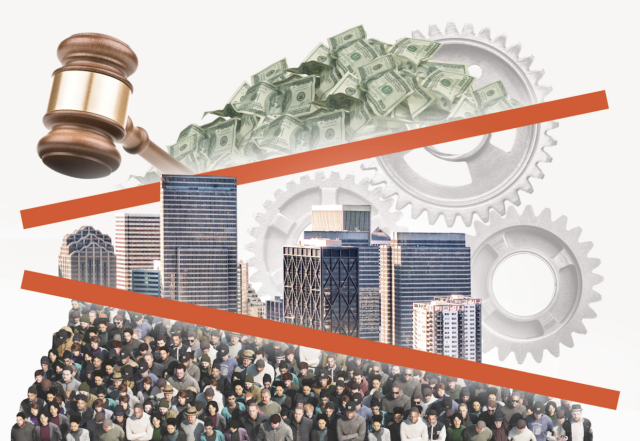
On Culture Blog / Feb 21, 2025
Who Is Rigging the System? 3 Tips for Talking about Villains
1. Focus more on ‘how’ the system is rigged than ‘who’ is rigging it.
2. If identifying villains is essential, point to groups, rather than to individuals.
3. When naming villains, always pair it with a clear explanation of how the system is rigged.

Americans agree that the system is rigged, but we aren’t always sure who is rigging it.
Progressive communicators need a clear, coherent story about rigged systems to prevent people from buying messages from the far right meant to convince people that immigrants, mainstream media, or the “deep state” are to blame for all our country’s problems. Our research shows that how we tell that story matters.
When it comes to naming a bad guy, we often find ourselves focused on individual villains—like particular billionaires or corporations. But research shows that this tendency can actually undercut demands for systemic change. Naming individuals keeps people’s attention at the individual level, preventing them from thinking about systems altogether. This makes it easy to think that, if we just get rid of that one person, things will be better. It can also inadvertently cue xenophobia or antisemitism, as the notion of nefarious rich people pulling the strings echoes antisemitic tropes.
It’s not that we shouldn’t name villains at all—it’s just that we have to do it carefully. Here are three things to keep in mind:
1. Focus more on ‘how’ the system is rigged than ‘who’ is rigging it.
There’s an understandable tendency in progressive communications and storytelling to focus our messages on individual villains. This is sometimes borne of an instinct that villains are an effective shorthand for explanations and that calling them out is necessary to prevent people from blaming the wrong actors. The research shows, however, that naming a villain as a substitute for an explanation of how the system is rigged can lead to unintended consequences. Simply naming villains doesn’t give people a sense of the way systems work. When we zero in on an individual “bad guy” who is rigging the system, people tend to focus on the personal character flaws of that person (for example, greed, selfishness, dishonesty) rather than systemic critiques of corruption (for example, the ways the system enables or rewards bad behavior). Focusing on how systems are rigged and how they can be un-rigged can prevent the villainizing of certain social groups, like immigrants, and help people identify potential paths toward systemic change.
2. If identifying villains is essential, point to groups, rather than to individuals.
Sometimes talking about villains is necessary to bolster organizing efforts and galvanize public support. In cases when it’s important to name villains, we found that talking about a set of actors (for example, large corporations or a broad set of organizations) instead of individuals (for example, a particular CEO or company) can help prevent people from falling back on individualistic or even antisemitic assumptions. This avoids inadvertently undercutting the broader goal of building support for systemic change.
3. When naming villains, always pair it with a clear explanation of how the system is rigged.
Naming villains is not a substitute for explaining rigged systems. Although there might be times when we need to name villains, this should not be done at the expense of clear explanations of how systems work and how they are rigged. Filling in the blanks and connecting the dots prevents people from reaching for alternative explanations (often rooted in racism, xenophobia, or antisemitism) that they may have heard elsewhere, and makes them less susceptible to far-right stories of how systems are supposedly being rigged by the government at the expense of white, working-class, US-born, or “normal” Americans. This doesn’t mean always providing a deep and comprehensive explanation—that’s not viable in many communication contexts—but rather providing a simple and clear explanatory story across our communications.
For more information on the research, a complete explanation of the System is Rigged mindset, and further recommendations for talking about rigged systems, read the full research report: Filling in the Blanks: Contesting What “the System is Rigged” Means.
Related resources:
Issues: Government and Democracy
Countries: United States
